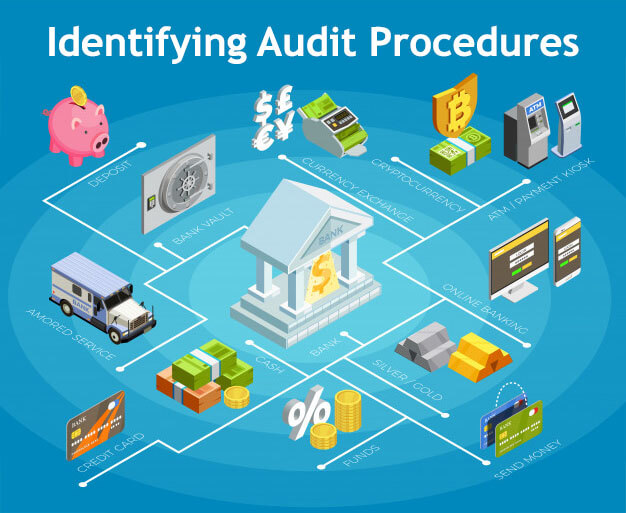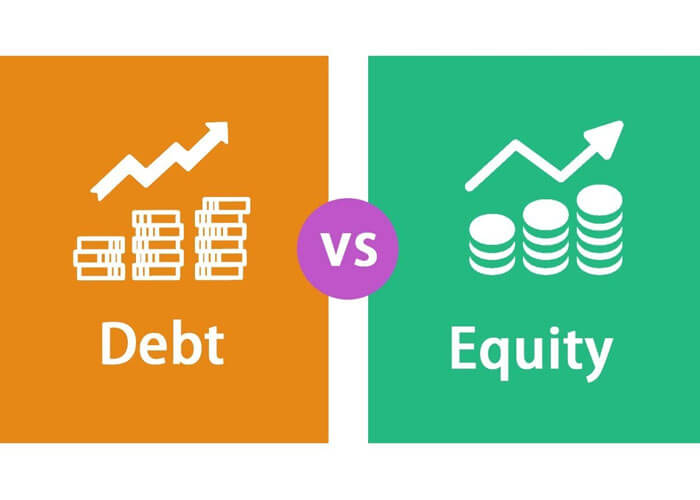[vc_row][vc_column][vc_column_text]
Usage and Application
Usage of the debt-equity ratio is essential in the following cases:
- Investments decisions: When a potential investor is considering to buy shares of a company (called prospect), that investor has to analyze what is the current debt-equity ratio (gearing) of the company. Similarly, when an investor is considering purchasing bonds of a company, they need to understand the significance of the existing debt burden of the prospect. It might be unsafe to invest further in a highly geared company.
- Financial Management: A company’s management would need to keep an eye on it’s reported figures. Finance managers have to comply with the lenders’ covenants restricting specific ratios within defined ranges.
- Let’s say that a company is required to maintain a debt-equity ratio (gearing) of 2:1. Then the management would keep calculating this ratio on periodic intervals and at the time of critical decisions making to ensure that gearing ratio is under the limits.
- Credit Risk Management: Many banks and other lenders need to keep track of the financial strengths and weaknesses of their borrowers. This monitoring is a part of the credit control process to avoid the risk of bad debts or to book the provisions of bad debts (if required). Bank’s would calculate the debt-equity ratio of their clients firstly at the time of considering loan request or requests for other banking facilities (like an overdraft, letter of credit, letter of guarantee etc.)
- Regulators, brokers and stock markets: Many analysts are working as information house, and they need to calculate different ratios to update their clients. They advise about different investment options and provide industry figures. Such analysts and brokers estimate debt-equity ratio (gearing) to update their clients. Similarly, many regulators and stock markets also keep an eye on critical ratios of entities regulated by them.
- In Studies and exams: In many studies and assignments of accounting, finance and economics, students need to calculate debt-equity ratios for the analysis and exam purposes.

Definition, example and formula
So, considering the widespread use of the gearing ratio, let’s first see the definition and formula of debt-equity ratio:
A debt-equity ratio calculates debt as a proportion of the equity of the company. Its formula is as below:
Debt equity ratio (or gearing) = Total Liabilities / Equity of the company
Generally speaking, the wording of ‘debt-equity ratio’ or ‘gearing ratio’ or ‘gearing’ or ‘gearing level’ or ‘financial leverage’ are used interchangeably and refer to the same ratio (or with some slight variations).
Example: Let’s say that if a company has total liabilities of $100,000 and its share capital and reserves sum up to $150,000, then the debt-equity ratio will be calculated as follows:
$ 100,000 / $150,000 = 0.667 or 66.7%

Interpretation of debt-equity ratio (or gearing)
So now, let’s understand how to interpret this ratio, what is the underlying message, is this a comfortable level of gearing? If not, then what to do when the debt-equity ratio goes high? Or what is the importance of debt-equity ratio in investment decision making? Or Let’s discuss below.
The above calculated debt-equity ratio of 66.7% denotes that the total liabilities on the company is 66.7% of the equity of the company.
This ratio indicates that lenders’ investment in the company is equal to 66.7% of the investment of the shareholders in the company.
Generally speaking, as a lender, a debt-equity ratio of below 1 (or below 100%) would sigh relief to the lenders that the shareholders have invested their own money more than what lender have invested in the company. This proportion is comforting for lenders as shareholders have a more significant stake in the company than lenders. Now, if the company would go bankrupt, lenders will not be the only one who will be at a loss. It is one of the psychological impacts of debt-equity ratio on the lenders.
It is easily understandable that a zero debt-equity ratio means that there is no loan on the company and that owner’s contributions fully fund the company.
A 100% geared company means that the amount of debt on the company is equivalent to the shareholder’s funds. So it means that both lenders and shareholders are equally financing capital of the company.
An acceptable or ideal level of gearing
Now the question is, what is the general or acceptable or ideal ratio of gearing. What is an optimal level of gearing. Well, the answer is, “it depends”. It depends on a lot of factors, including company size, industry, regulations, macro and microeconomics environment, business strategy, future projects and of course, competition. In some companies, it is reasonable to be highly geared. These are those industries which require a high setup cost, involving high investment in plant and machinery. Examples include the airline industry, construction industry, real estate, manufacturing and maritime etc. As such, a gearing level of above 100% to 200% would not be considered alarming in these industries.
While in some industries where initial business setup costs are low and in those industries, the gearing level of companies is generally low. These industries would include retail, trading, service sectors, technological and software companies. As such, a gearing level of 0 to 30% would be considered normal in these sectors.
It is essential to understand that the gearing ratio (leverage level) would not remain the same over the years; it is a ratio which keeps moving with the business. The ratio is changing because of the payment of a portion of loans every year. Similarly, the profits of the company keep adding to the owner’s equity (if not fully drawn). So, the general nature of the gearing ratio is that you may observe a declining trend in the debt-equity ratio over several years. This decrease is on the assumption that the company will not avail new loans or will not reschedule its liabilities.

Controlling the gearing ratio
If you are handling the finances of the company, and you need to control the debt-equity ratio of the company, you may evaluate one or more of the following options:
- Avoid distribution of profits or keeping it to a minimum possible level.
- Say no to new borrowings and issuing bonds
- Negotiate with lenders for better (low cost) interest rates
- Fund any new projects with new investment from owners
- Utilize short term funding sources like money markets for short term requirements
- Issue bonds with convertible features (i.e., a bond which will be convertible into shares after a defined period)
- Early payment of loans to reduce the debt burden
Variations of debt-equity ratio
One variation of the debt-equity ratio is to utilize only long-term liabilities (instead of total liabilities) and dividing them with equity. The formula will be as follows:
Debt equity ratio = Long Term Debt / equity * 100
Using this formula means that we have to consider only long-term debts when calculating the debit-equity ratio. This formula is another meaningful variation as it ignores current liabilities. The argument is not to double-weight current liabilities in both the current ratio and the debt-equity ratio.
Therefore, the debt-equity ratio should compare only long term liabilities with the equity of the company.
Both ways of calculation of debt-equity ratio are acceptable in general. However, we need to use a consistent formula when comparing gearing of two different companies or when comparing across different accounting periods. When different companies use different methods, then the results of these ratios will not be comparable.
Taking benefit of high gearing ratio
Usually, it is considered risky to invest in a highly geared company. Therefore, for a highly geared company, it is typically difficult to obtain further financing, both in terms of debt or equity. A low-risk averse investor can take a significant benefit of such financial situation of the company. A company who is finding it difficult for its upcoming promising projects would be willing to pay a higher premium (i.e., a higher interest rate or lower share price) for the funding needed. If the investor is confident of the company’s prospects, they can take the benefit by investing in the company.

Final remarks
As an investor, you usually have two ways of investing in a company. Either you can invest in the equity of the company, or you can lend the money to the company. Lending may be either by purchasing bonds or through a loan agreement. However, whether you are a prospective shareholder or a potential lender, you need to keep track of the debt-equity ratio. Investing in a highly geared company is riskier, regardless of the mode of investment.
The debt-equity ratio is one of the most important ratios in the financial analysis of a company and evaluation of investments. The ratio, coupled with other ratios and other analysis, can prove useful in making the right investment decision.[/vc_column_text][/vc_column][/vc_row]
























